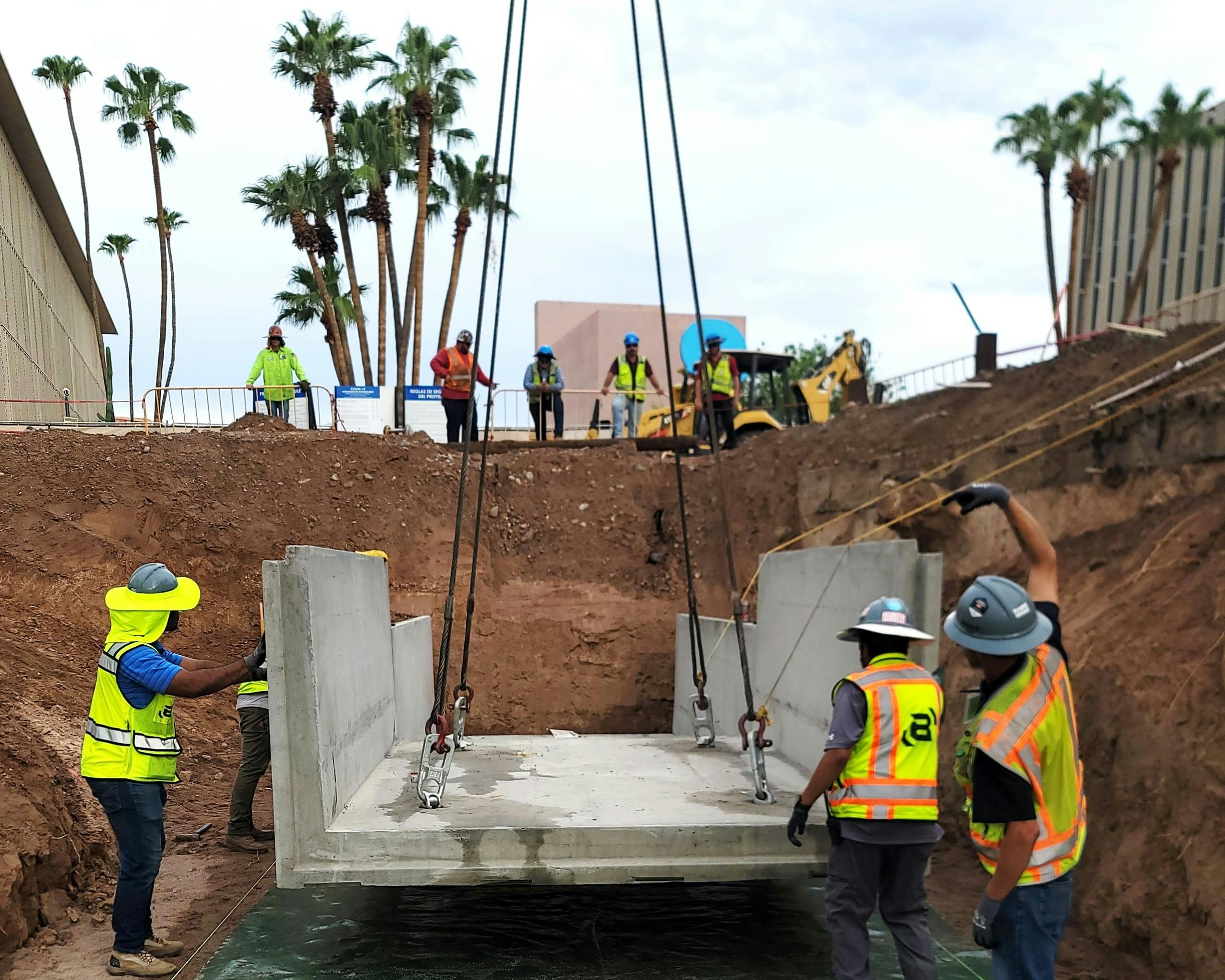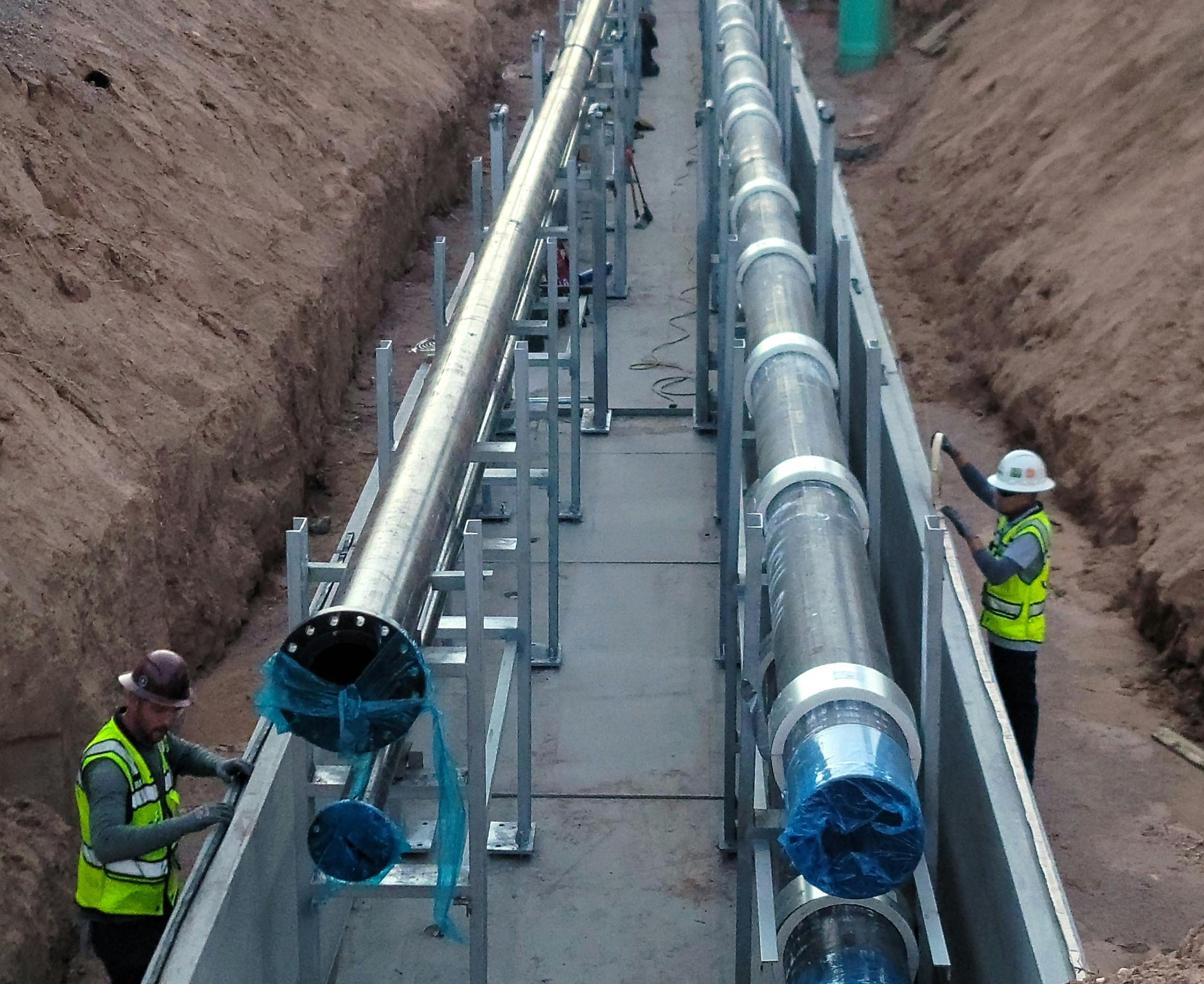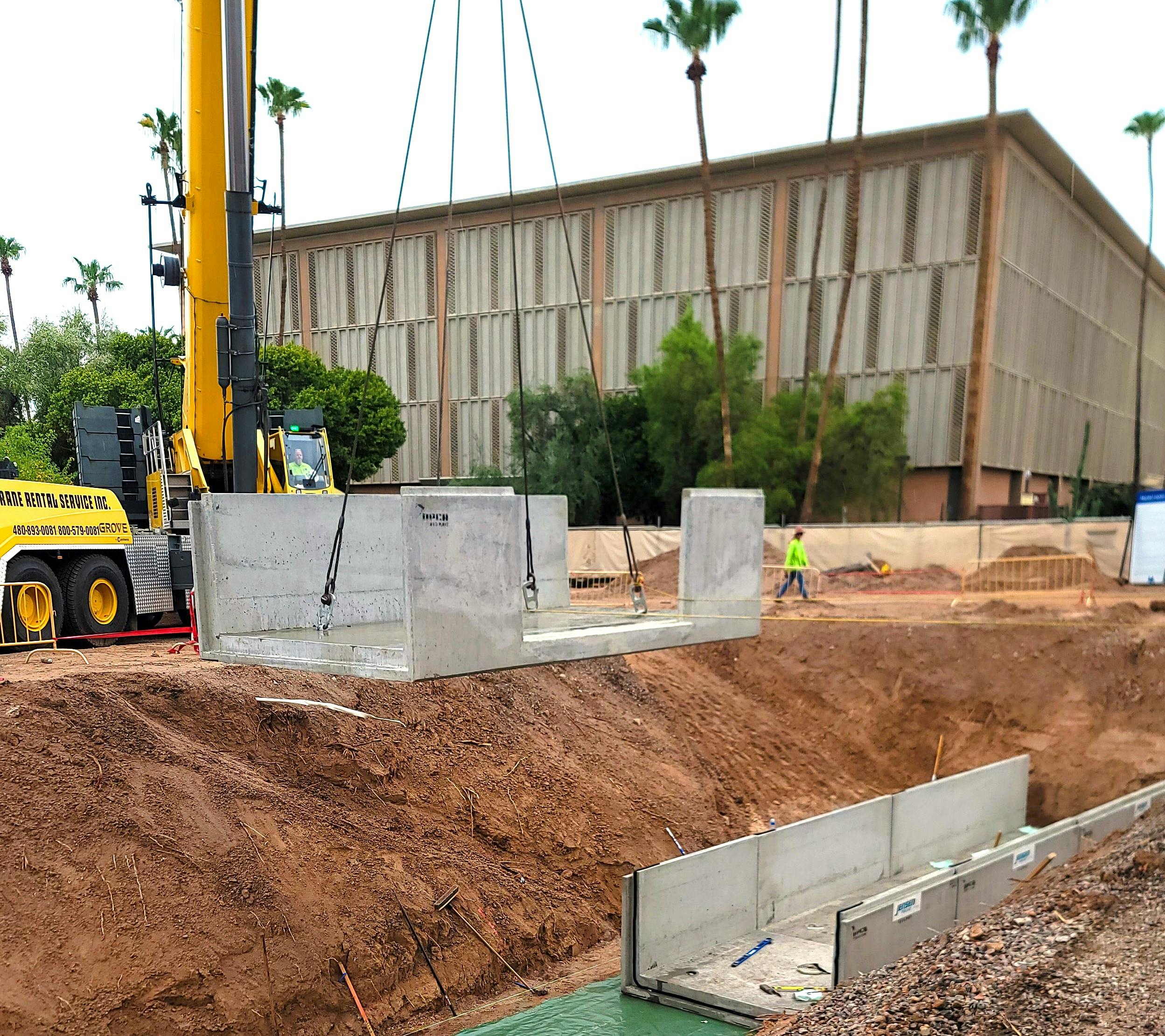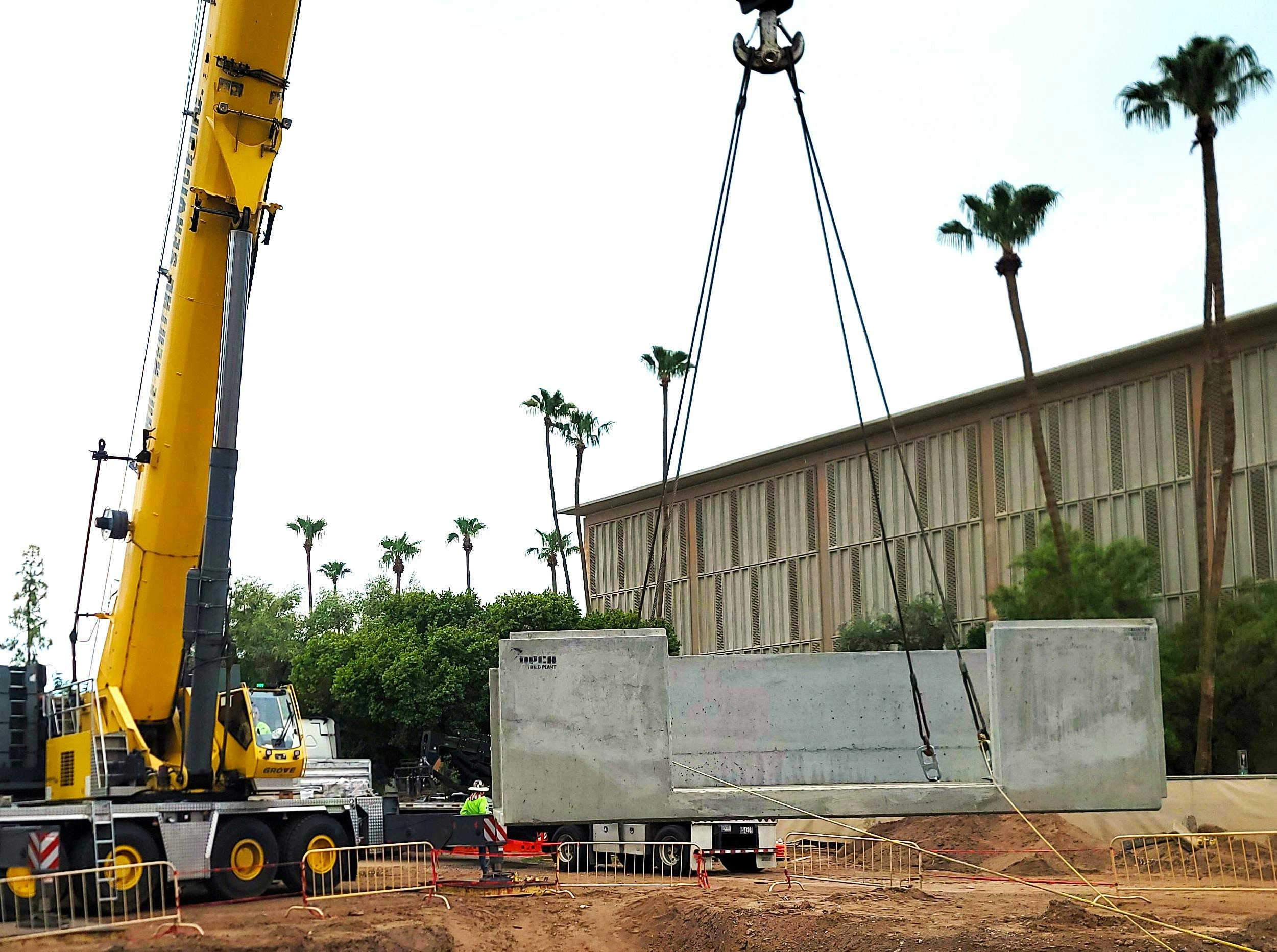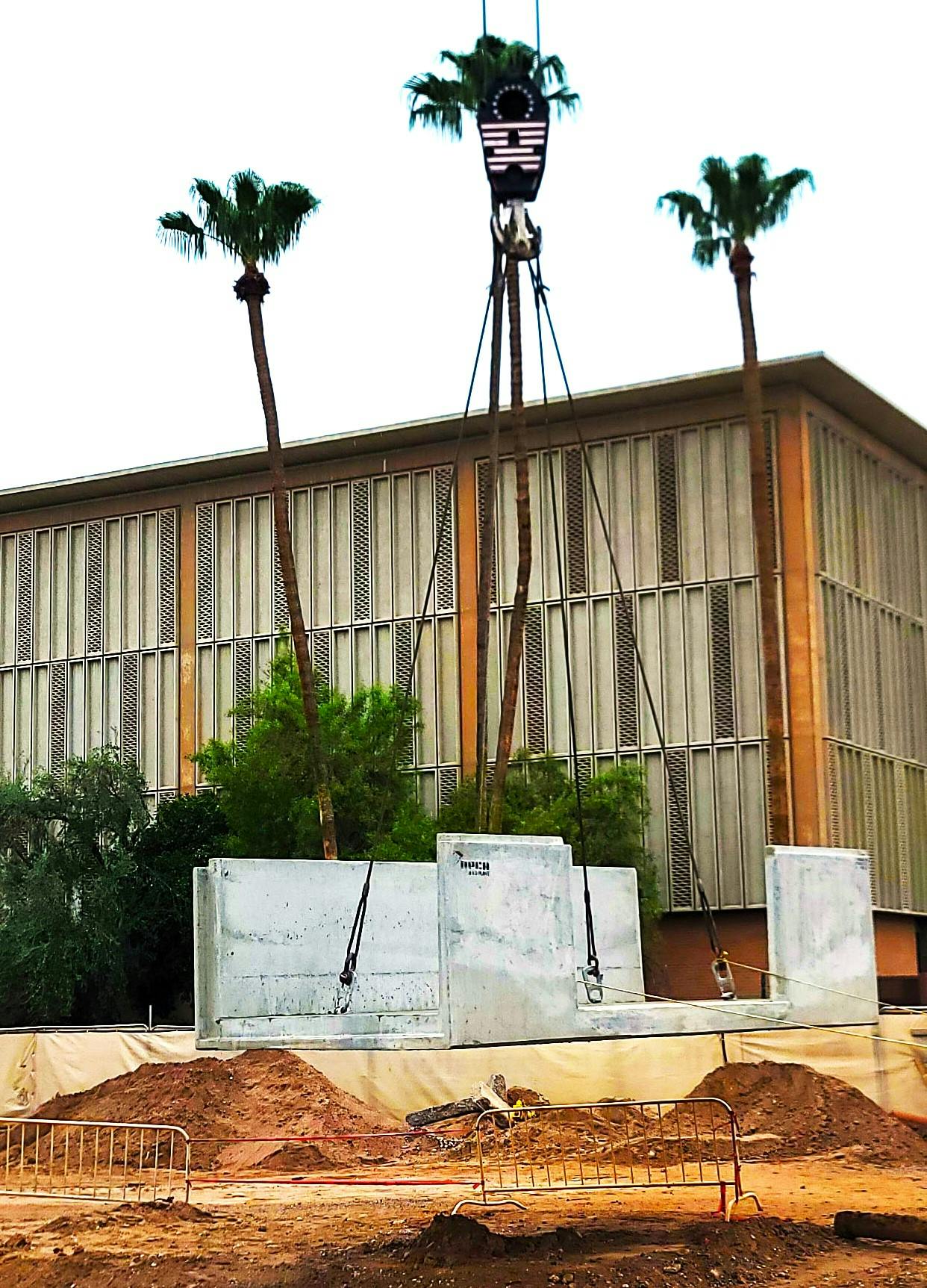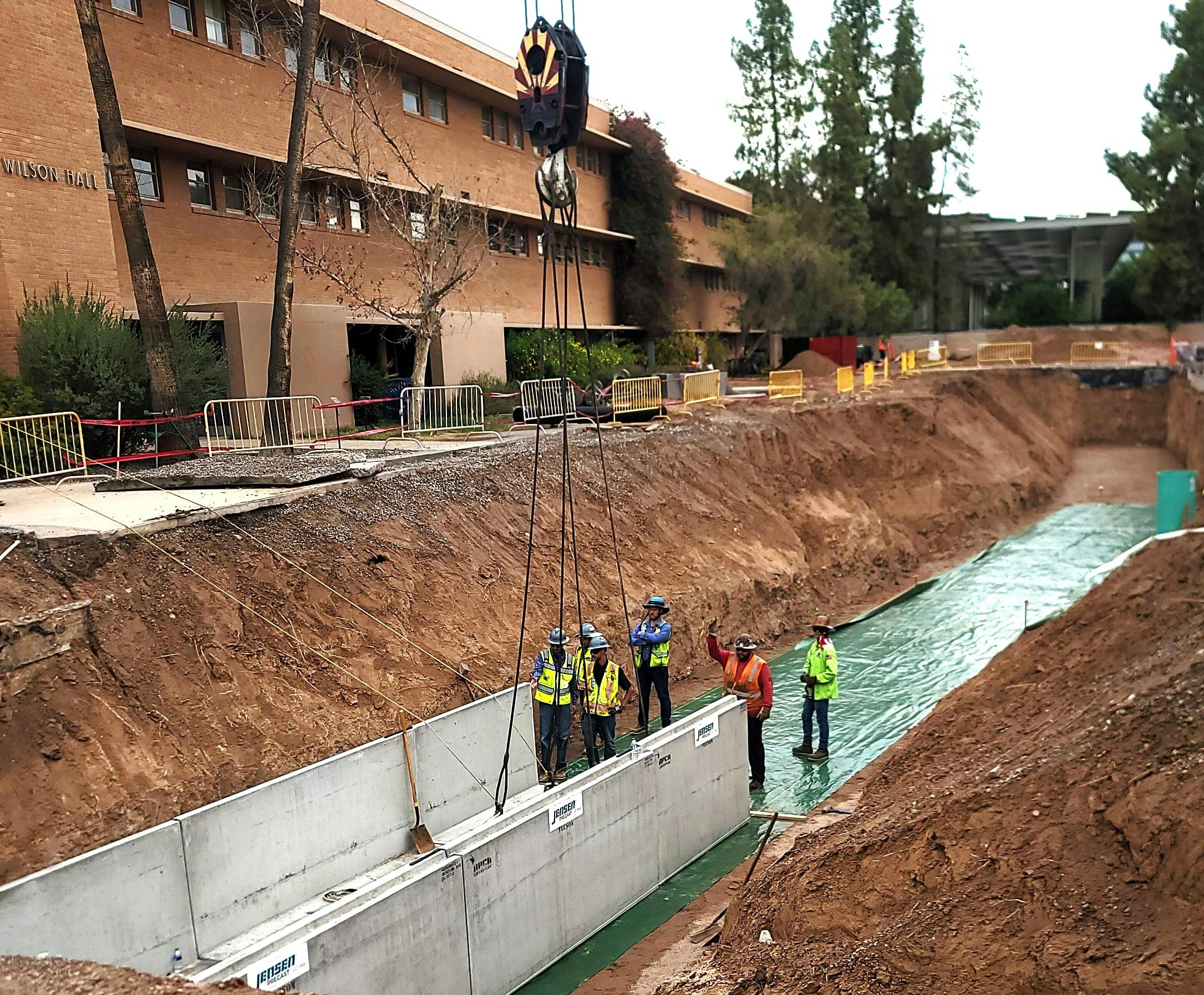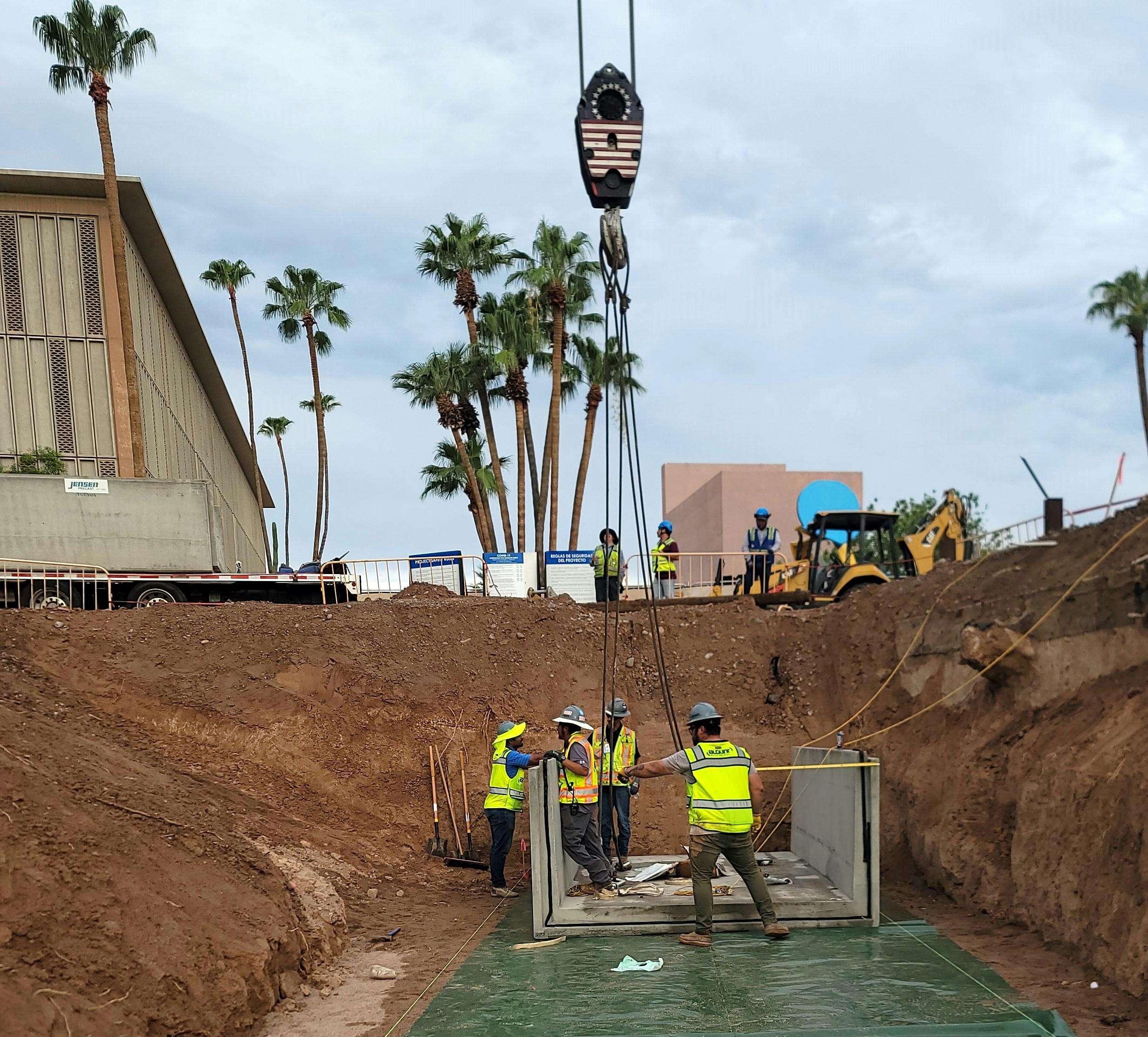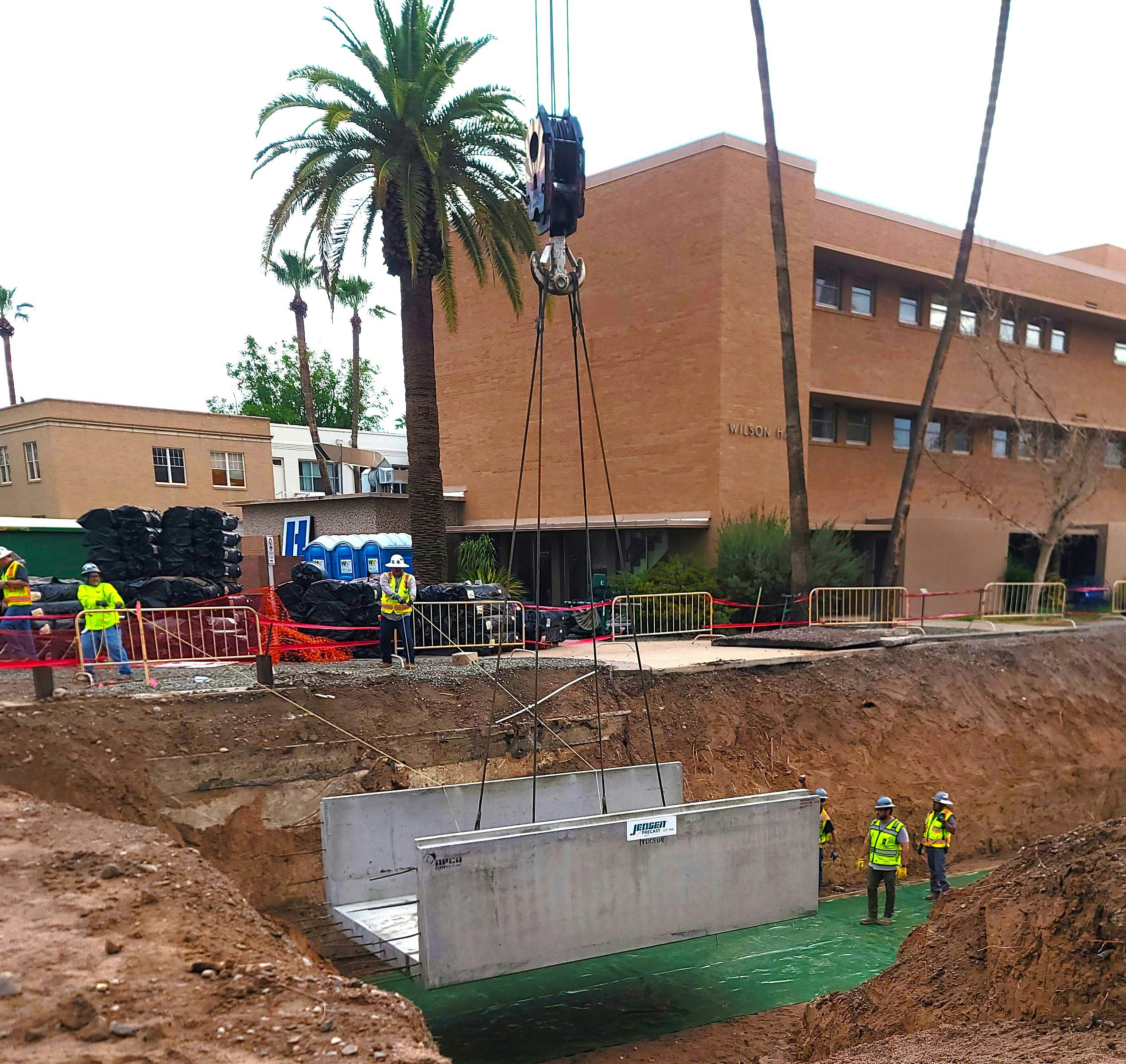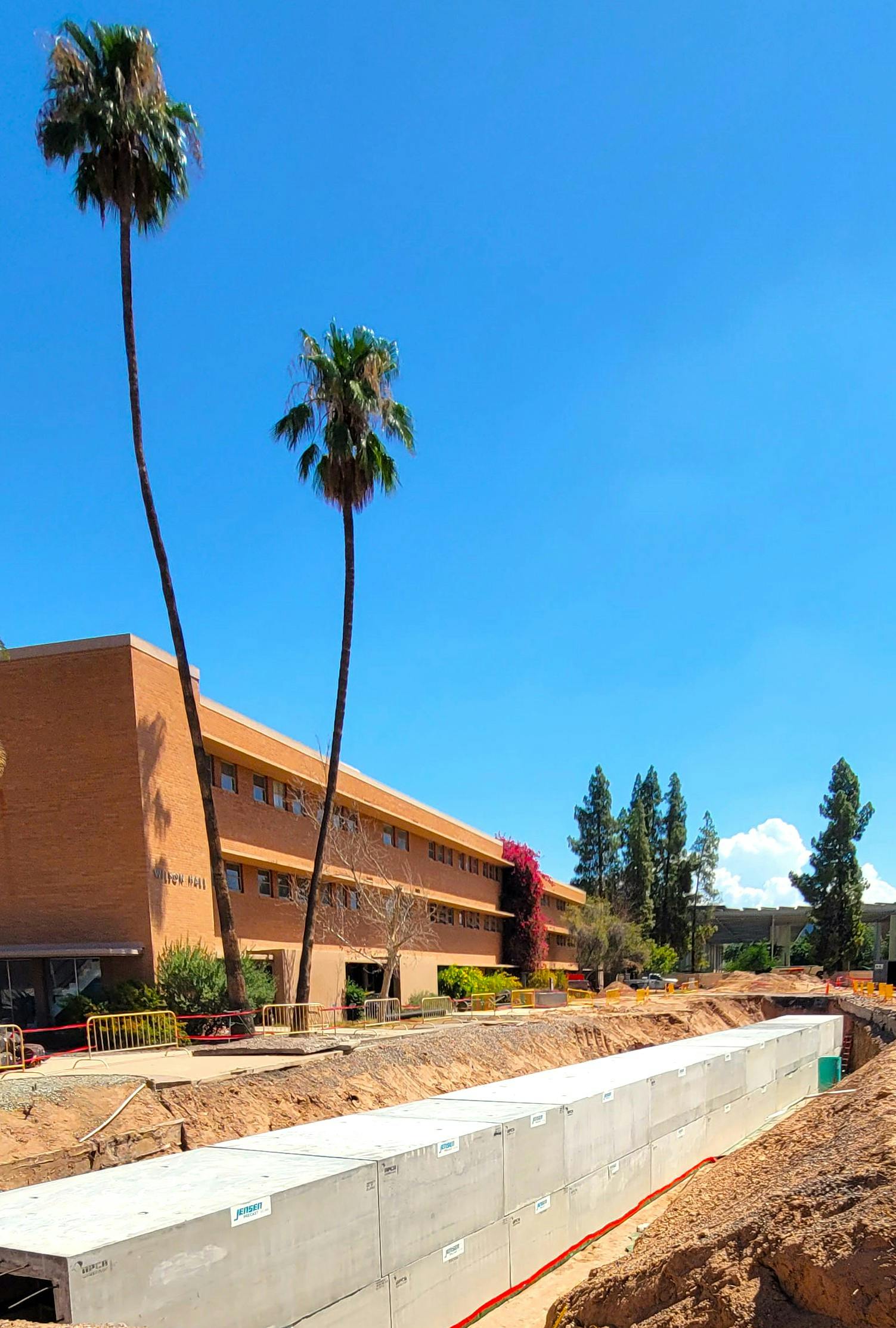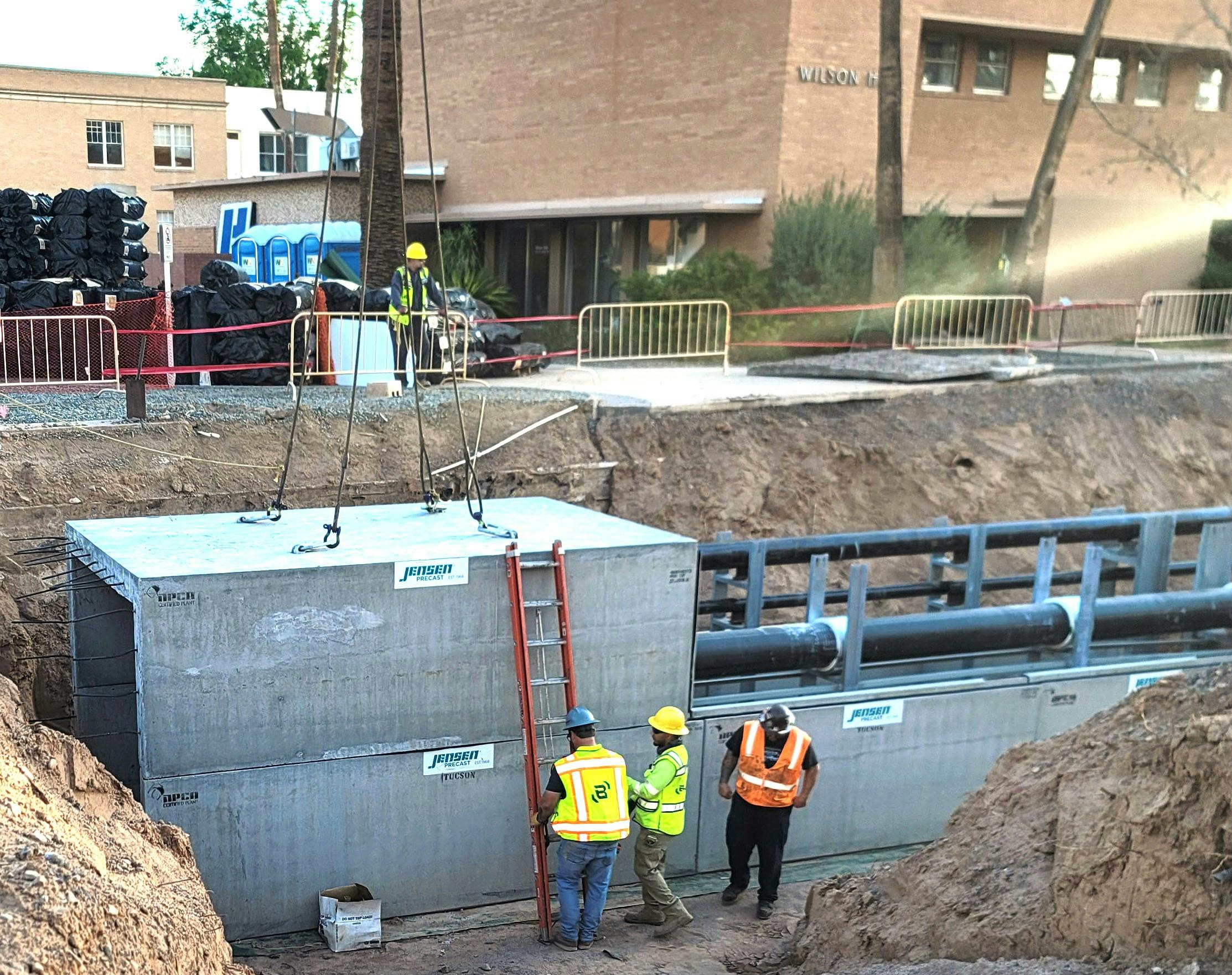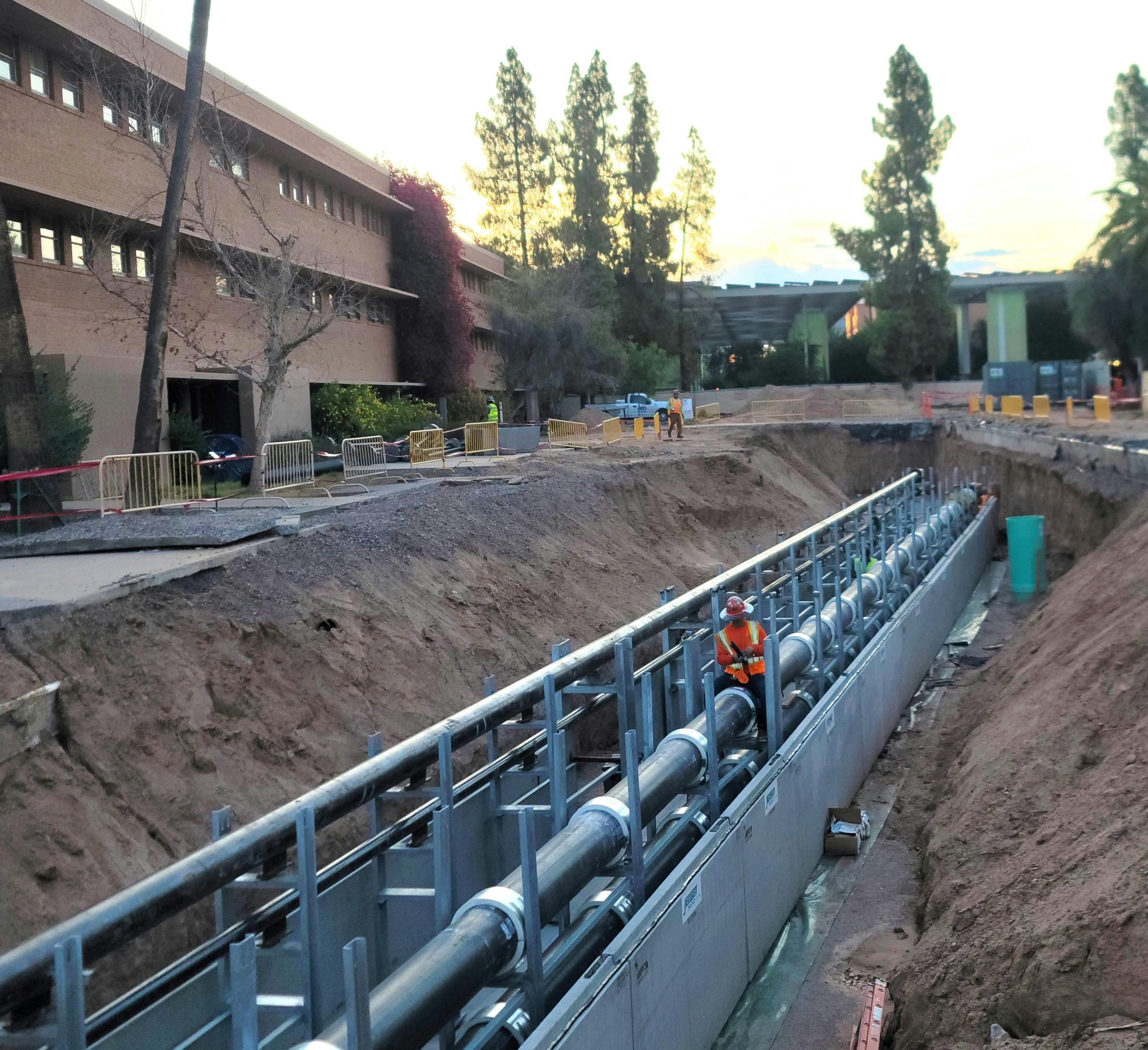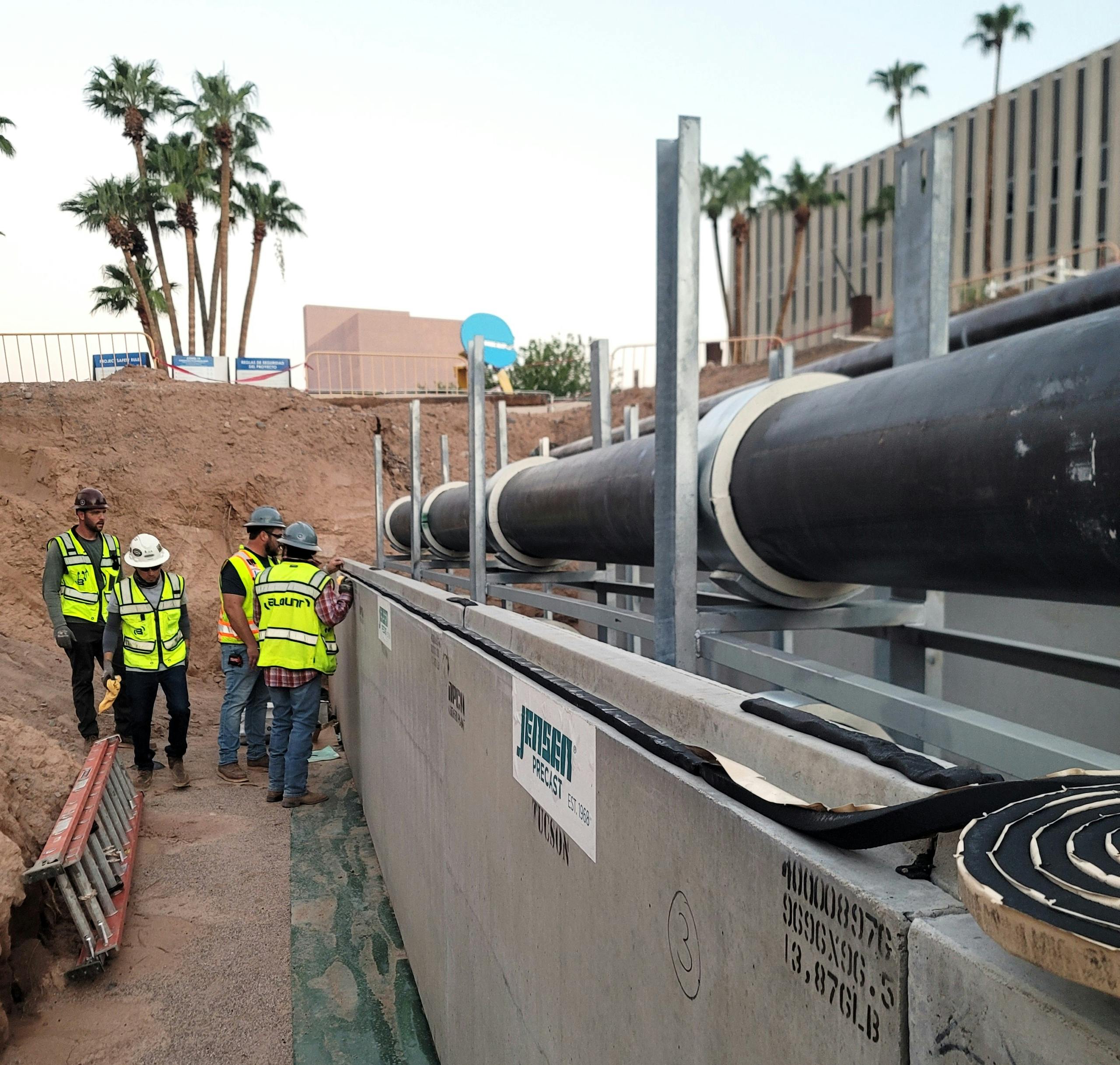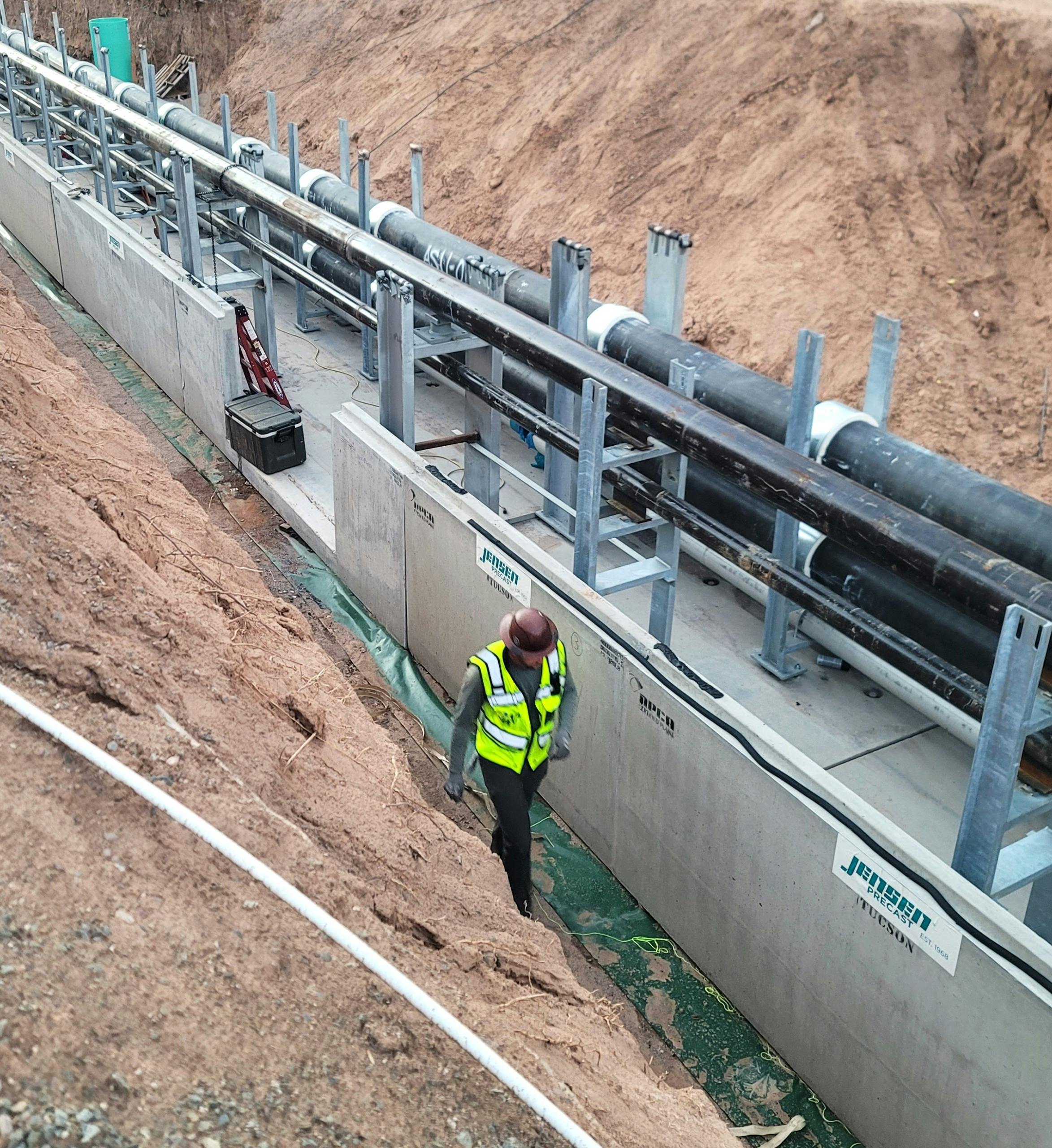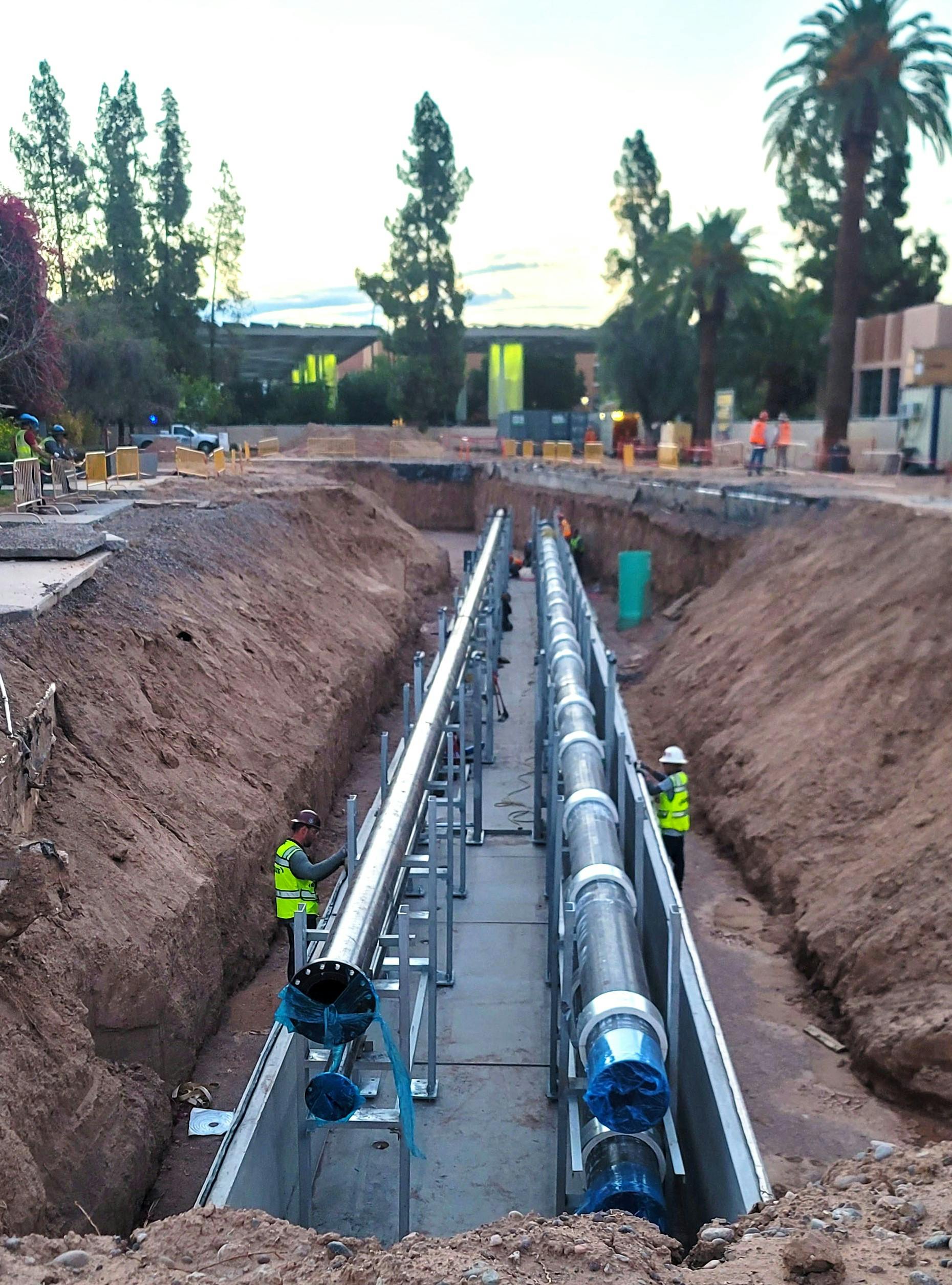Concrete Culvert Updates Arizona State University Utilities Tunnel
Tempe, Arizona
Keeping students and teachers cool in Arizona’s hot climate is a necessity at the Arizona State University (ASU) Tempe campus. Lying 15’ beneath the university’s surface is an expansive underground utility tunnel system servicing the entire campus.
The underground structure houses utility pipes containing chilled water and steam used to power, cool, and heat the campus. Some of these tunnels are more than 80 years old. In 2022 when construction started on a new five-story academic building to replace the university’s Wilson Hall residence housing, it was time to do some updates to the aging underground infrastructure.
The Jensen manufacturing facility in Tucson, Arizona, had a solution for the deteriorating utility tunnel in Tempe: Forty-eight 8’W x 8’H x 16’L Type II segmental box culvert structures replaced approximately 1,000’ of the underground tunnel network that provides utility services to the western side of the campus. Updating the infrastructure with precast concrete will ensure safe, reliable, and sustainable operations of campus utility and information technology systems while reducing future maintenance needs.
Beyond the large scale, there were various aspects of this project that made it outside the normal culvert installation.


Inside the Culvert
Once the bases of the culvert were set, the utility equipment was placed inside. Due to the large amount of equipment needed inside the tunnel, the piping was partially installed prior to the top of the culvert being set.
Additionally the culvert needed to be attached to existing cast-in-place tunnels. The ASU underground tunnel system measures approximately five miles long and stretches from Sun Devil Stadium on Veterans Way to Hayden Hall near Apache Boulevard. Inside the tunnels are industrial-grade pipes, which funnel steam and chilled water throughout the campus.
“A lot of tunnels have been here as long as the campus has, but more tunnels have been added to serve the energy needs of the campus as it expanded,” says Rick Pretzman, ASU Director of Facilities Management, in an article from ASU News.
The tunnels undergo maintenance various times a year to fix leaking pipes and faulty wiring. Having access to the lines within the utility tunnel is vital for future maintenance and upkeep.


Outside the Culvert
“Having a tunnel to encase the utilities provides easy access if there are issues down the road,” explains John Suor, Jensen Outside Sales Representative and Estimator, who oversaw the ASU Utility Tunnel project for the company. “The customer could have easily backfilled the lines, but if there’s an issue in the future, it would require major demolition of the landscape to get to the utilities. Since the utilities are very long, it could be difficult to locate any issues. You may end up digging up the entire landscape trying to find any issues because the landscape is already wet. The tunnel system eliminates that potential problem.”
Another unique aspect of the project was the use of vapor barrier to encase the utility tunnel. Also referred to as vapor diffusion retarders, the material reduces the rate water vapor can move through the culvert.
“Vapor barrier was recommended by the project engineer because they wanted to protect the utility tunnel from moisture,” Suor says. “There is potential for significant moisture above the utility tunnel due to landscaping and irrigation systems.”
Construction on the ASU Tempe campus will continue through August 2024. The new 178,000 square foot facility replacing Wilson Hall will provide classrooms and office space. The building is just the first phase of a new academic district being added to the campus.


Learn how precast concrete box culvert can redefine your infrastructure project by contacting us now.
See our lineup of culvert products here.
